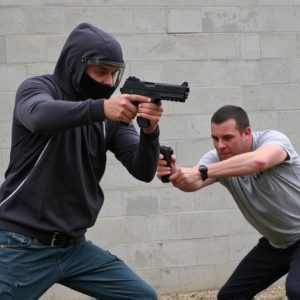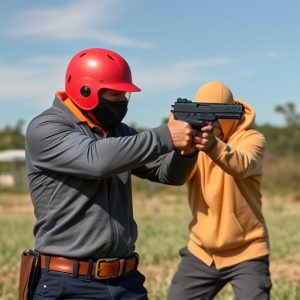Debilitating Electrical Charge Weapons: Stun Gun Facts, Law & Pricing
Stun guns, electronic control devices (ECDs) that temporarily disable targets with electric pulses,…….
Stun guns, electronic control devices (ECDs) that temporarily disable targets with electric pulses, vary in price based on their voltage output, pulse width, current intensity, battery life, and additional features. The typical price range for quality stun guns is $50 to $300, offering options for diverse budgets while ensuring safety through careful engineering of high-voltage capacitors, silicon chips, and protective casings. Legal accessibility varies globally due to weapon classification regulations, with lower-priced models generally more accessible but still subject to restrictions. Investing in a mid-range stun gun balances affordability and effectiveness, providing superior quality without compromising user safety.
“Discover the world of debilitating electrical charge weapons, also known as stun guns, through this comprehensive guide. We’ll explore their inner workings, from key components and design principles to the science behind amperage and voltage. Delve into the legal landscape surrounding their possession and dispel myths about affordability. Understanding these aspects is crucial for navigating the market for quality stun guns within a diverse price range, ensuring safety without compromising accessibility.”
- Understanding Debilitating Electrical Charge Weapons: A Comprehensive Overview
- Key Components and Design Considerations for Stun Guns
- The Role of Amperage and Voltage in Determining Effectiveness
- Legal Implications and Regulatory Frameworks Governing Stun Gun Possession
- Price Range for Quality Stun Guns: Unlocking Affordability Without Compromising Safety
Understanding Debilitating Electrical Charge Weapons: A Comprehensive Overview
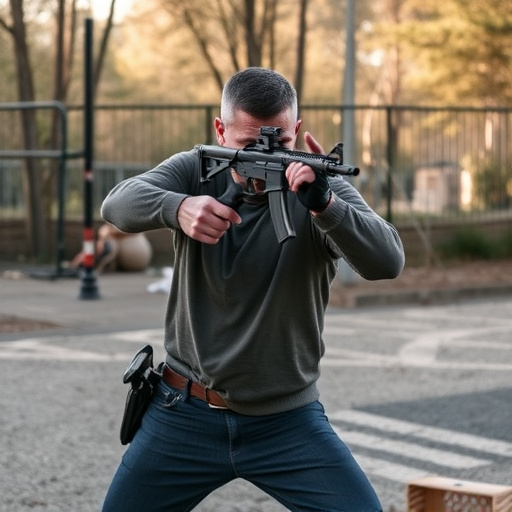
Debilitating electrical charge weapons, commonly known as stun guns, are non-lethal self-defense devices that utilize an intense electric current to temporarily incapacitate a target. These tools operate by delivering a strong shock through the body, disrupting muscle control and causing temporary paralysis. Unlike traditional firearms, stun guns do not aim for fatal consequences, making them a popular choice for personal protection among individuals seeking non-lethal force options.
The effectiveness of a debilitating electrical charge weapon relies on several factors, including voltage output, pulse width, and current intensity. High-quality stun guns typically offer a price range from $50 to $300, varying based on features like power, weight, and design. This market diversity caters to diverse user needs, ensuring individuals can find suitable options within their budget, balancing performance and affordability.
Key Components and Design Considerations for Stun Guns

Stun guns, also known as electronic control devices (ECDs), are non-lethal weapons designed to incapacitate a target through an intense electrical pulse. Key components include high-voltage capacitors, silicon chips for controlling the discharge, and powerful electrochemical cells or batteries. The design should balance power with safety features, such as trigger mechanisms, controls, and protective casing, to ensure user safety and prevent accidental activation.
When considering a stun gun’s design, factors like voltage output, pulse width, and current strength are crucial. Higher voltage outputs (typically 10,000 to 15,000 volts) deliver more force but require careful engineering to avoid hazards. Pulse width and current strength influence the weapon’s effectiveness; shorter pulses with higher currents can stun targets without causing severe injury. Price range for quality stun guns varies based on these specifications, battery life, and additional features like LED flashlights or alarm systems.
The Role of Amperage and Voltage in Determining Effectiveness
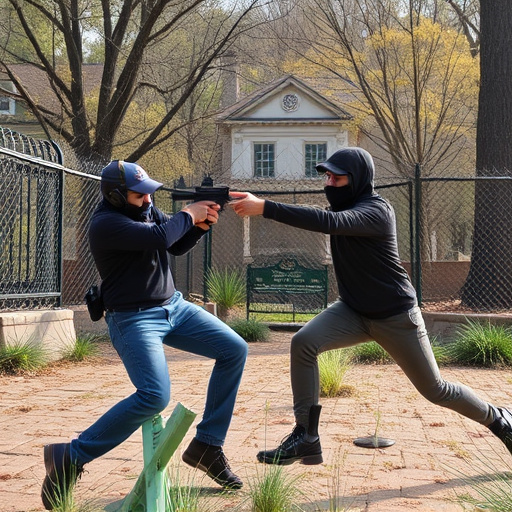
The effectiveness of a debilitating electrical charge weapon, like a stun gun, is primarily determined by two key factors: amperage and voltage. Amperage, measured in amps, represents the amount of electric current flowing through the device. Higher amperage delivers more power, resulting in stronger shocks that can incapacitate a target faster. Voltage, on the other hand, measures the electrical pressure or force behind the current. A higher voltage can penetrate deeper into the body, causing more severe disruptions to muscular and nervous systems, thereby enhancing the weapon’s effectiveness.
The interplay between amperage and voltage is crucial in determining not just the severity of the shock but also the price range for quality stun guns. Devices with higher amperage and voltage outputs tend to be more powerful and effective but often come at a premium cost. Understanding these specifications allows users to make informed decisions when purchasing, ensuring they get a stun gun within their budget that delivers the necessary level of protection.
Legal Implications and Regulatory Frameworks Governing Stun Gun Possession

The legal landscape surrounding stun gun possession varies greatly across jurisdictions, reflecting differing societal values and political contexts. In many countries, stun devices are classified as firearms or weapons, subject to stringent regulations. These regulations often dictate who can own, carry, and use stun guns, with strict licensing requirements and prohibited areas where their use is forbidden. The legal implications extend to import and export controls, with some countries banning the possession of stun guns altogether or restricting them to law enforcement agencies.
Regulatory frameworks typically consider the price range for quality stun guns as a factor in determining accessibility. Lower-priced models may be more easily obtainable, though still subject to age restrictions and background checks. Higher-end stun guns with advanced features might require additional permits or registration. These legal constraints are designed to balance personal safety and security with public safety, ensuring that stun gun ownership is responsible and regulated.
Price Range for Quality Stun Guns: Unlocking Affordability Without Compromising Safety
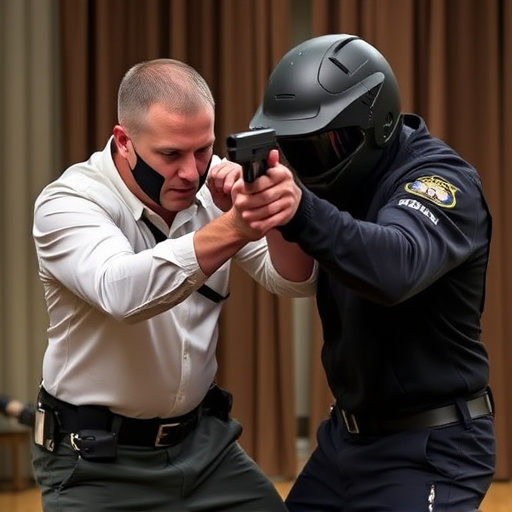
The cost of a stun gun can vary drastically based on its power output, features, and quality. While entry-level models might be available for as little as $50-$100, investing in a high-quality stun gun with a robust price range of $200-$300 offers a more reliable and safer option. This higher price point often translates to better materials, advanced safety mechanisms, and increased power, ensuring a more effective response tool without compromising user safety.
Choosing the right balance within the price range for quality stun guns is crucial. Opting for a mid-range model provides peace of mind while remaining accessible, making self-defense a viable option for those seeking both affordability and effectiveness.
In conclusion, debilitating electrical charge weapons, commonly known as stun guns, are powerful tools designed to subdue individuals without causing permanent harm. Understanding their key components, the science behind amperage and voltage, legal frameworks, and available price ranges for quality models is essential for informed decision-making in their acquisition and use. By considering these aspects, folks can navigate this market effectively while prioritizing safety and responsible ownership.
